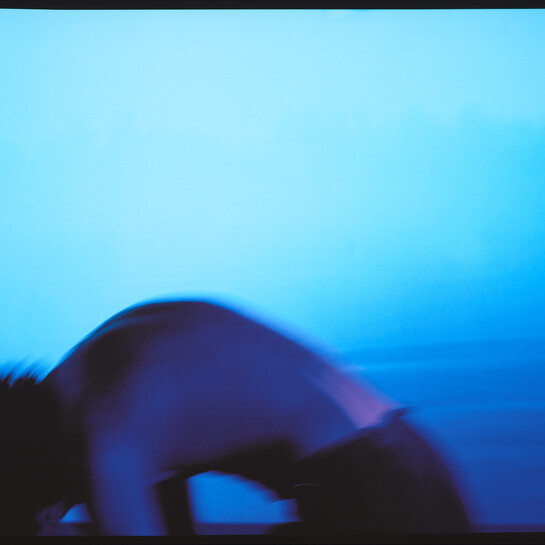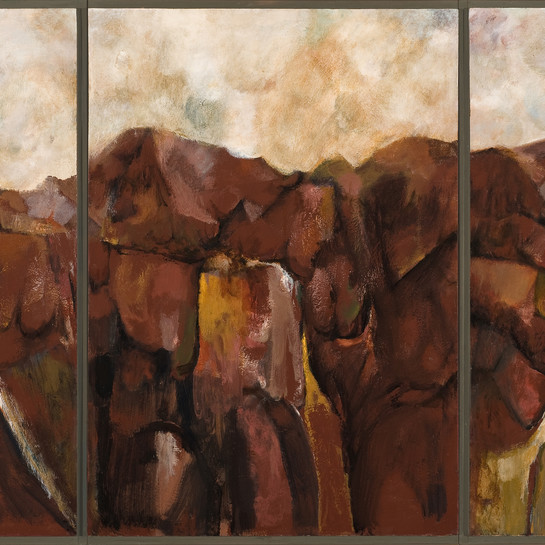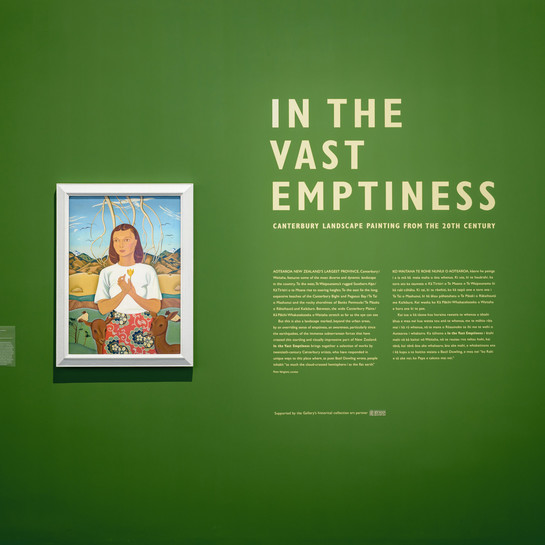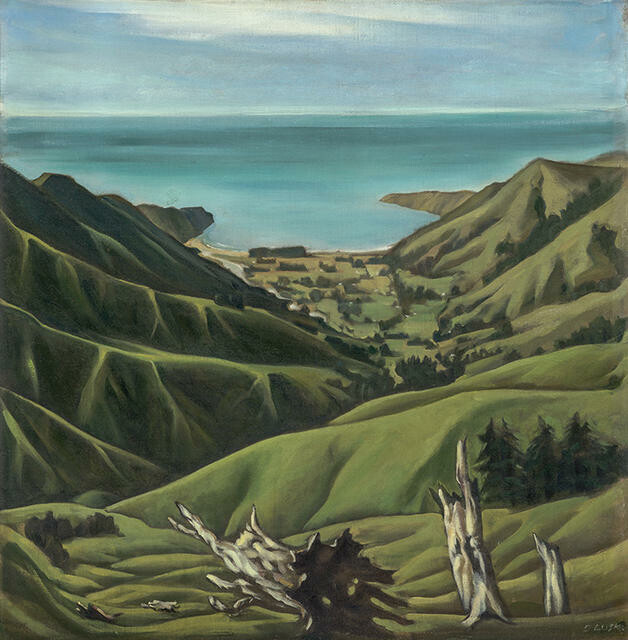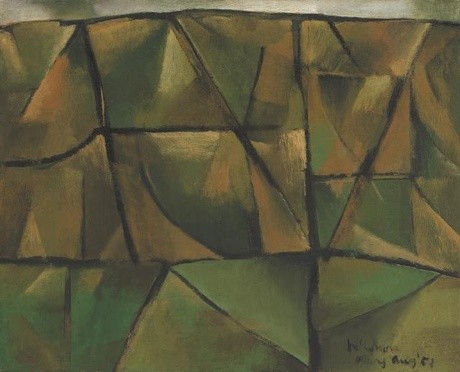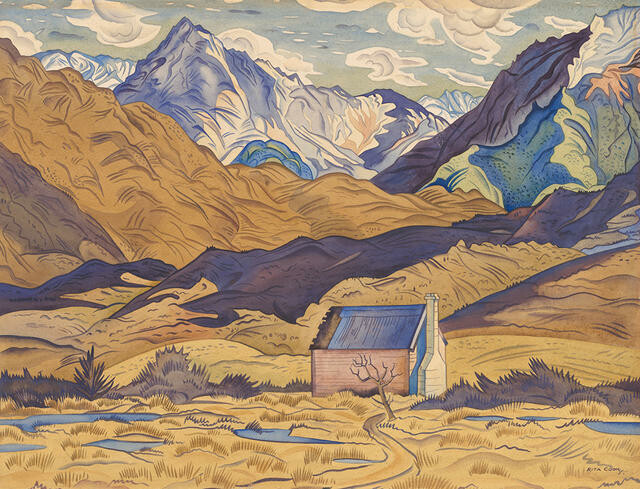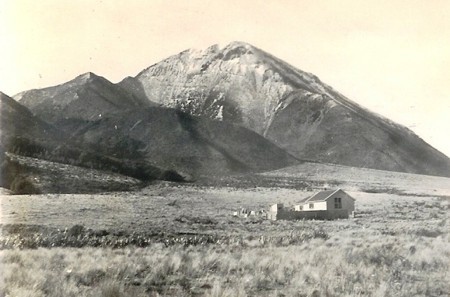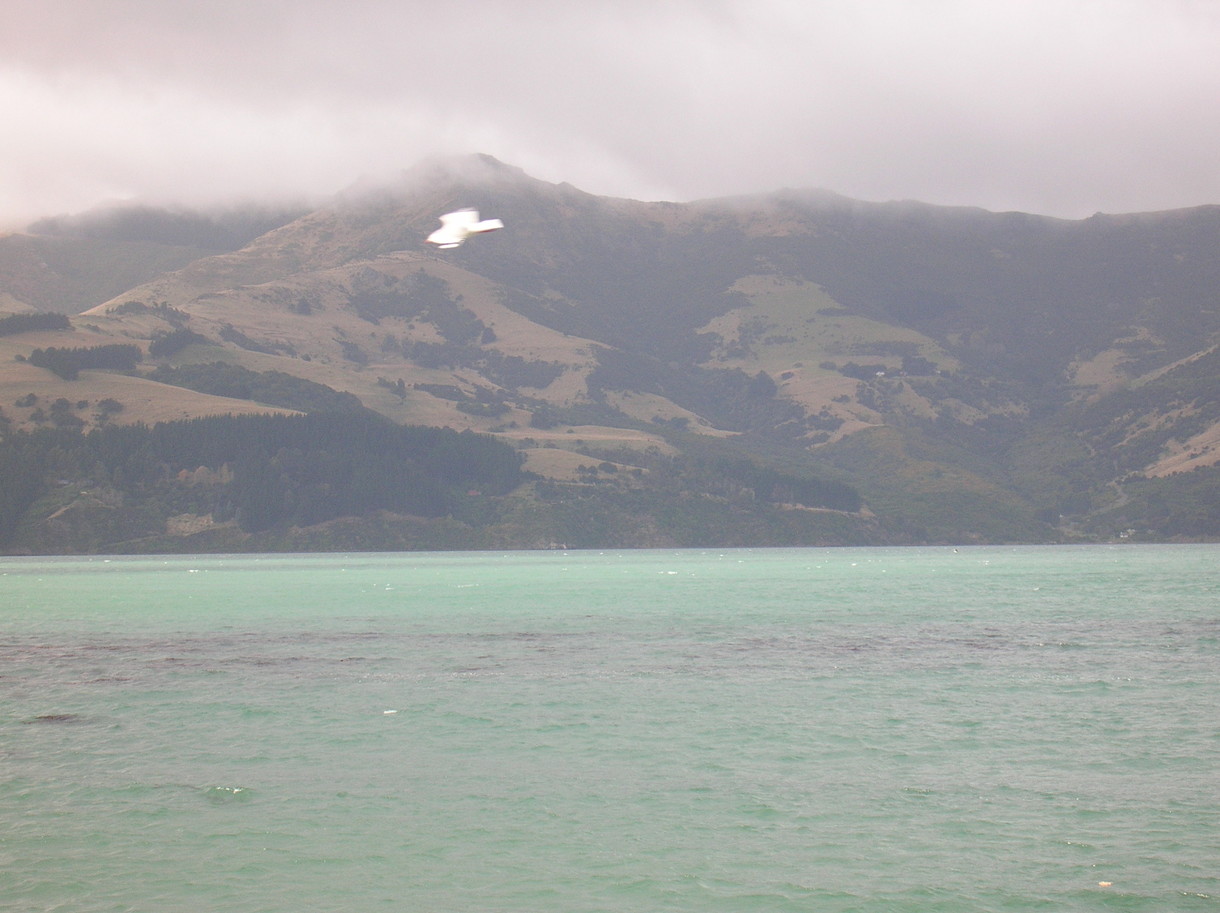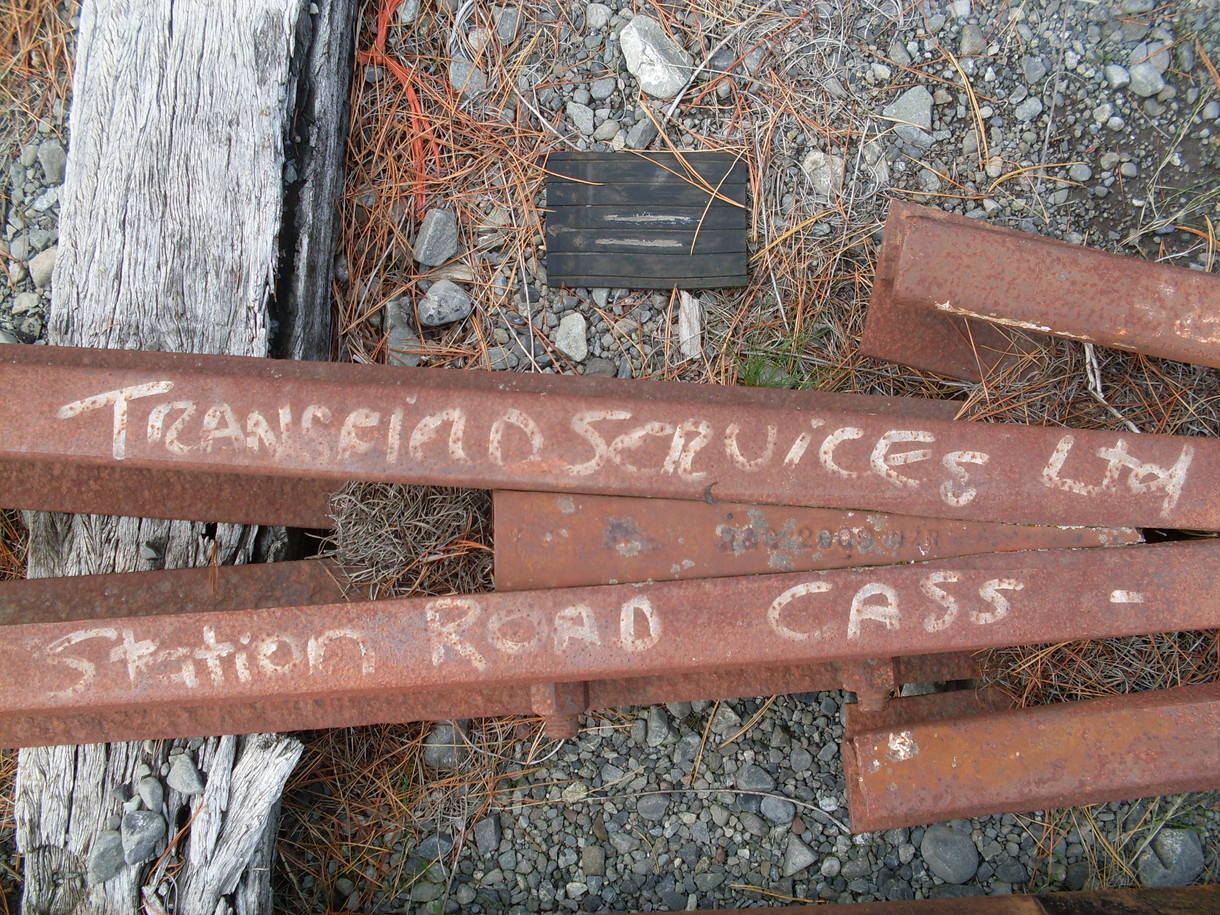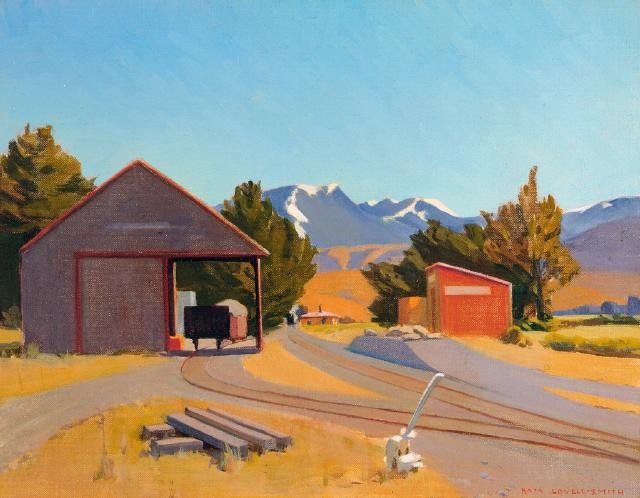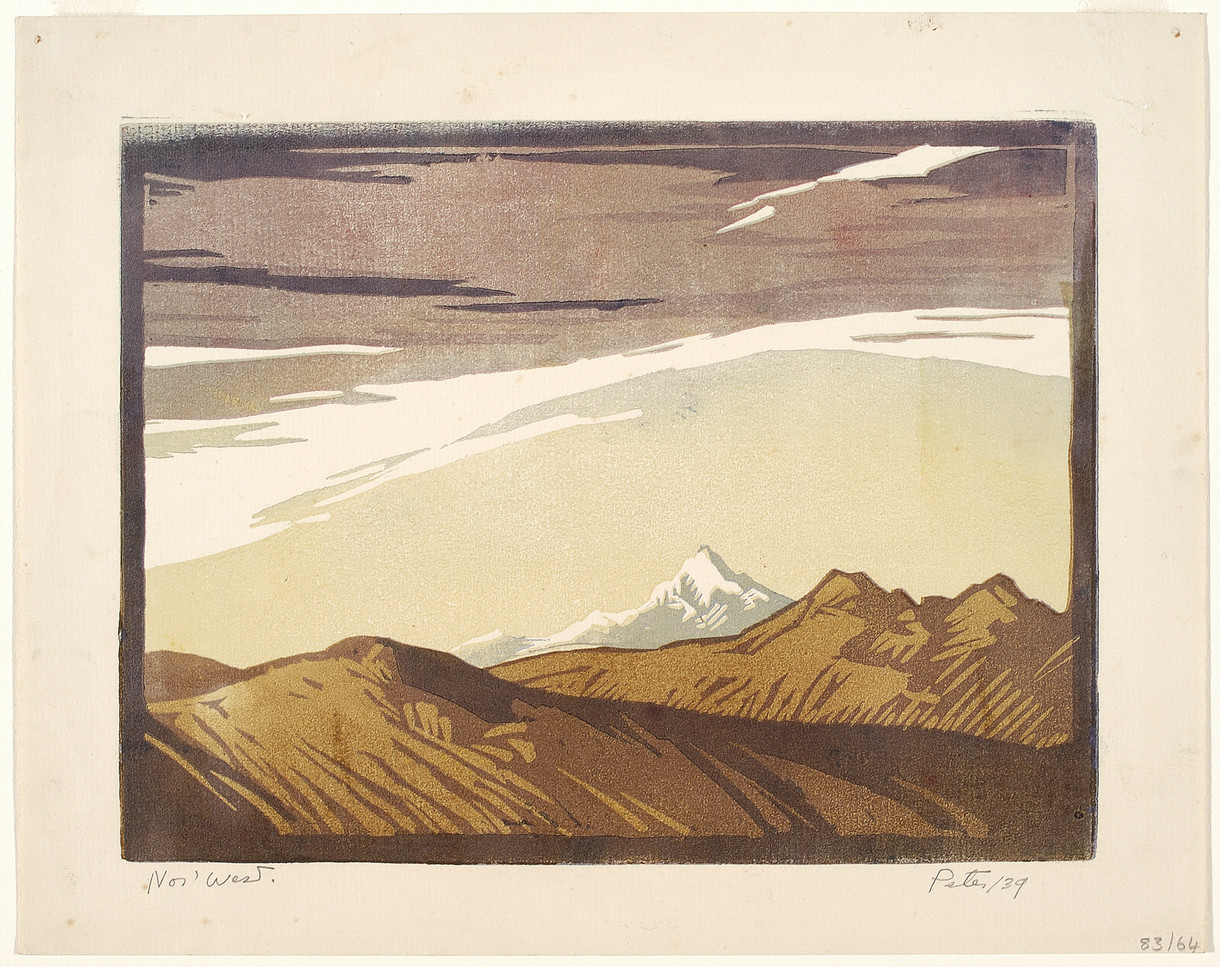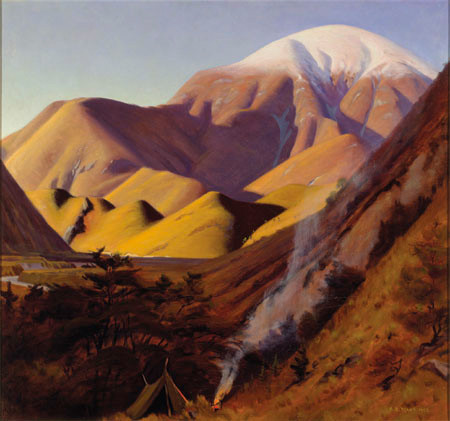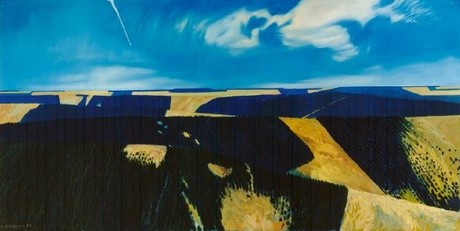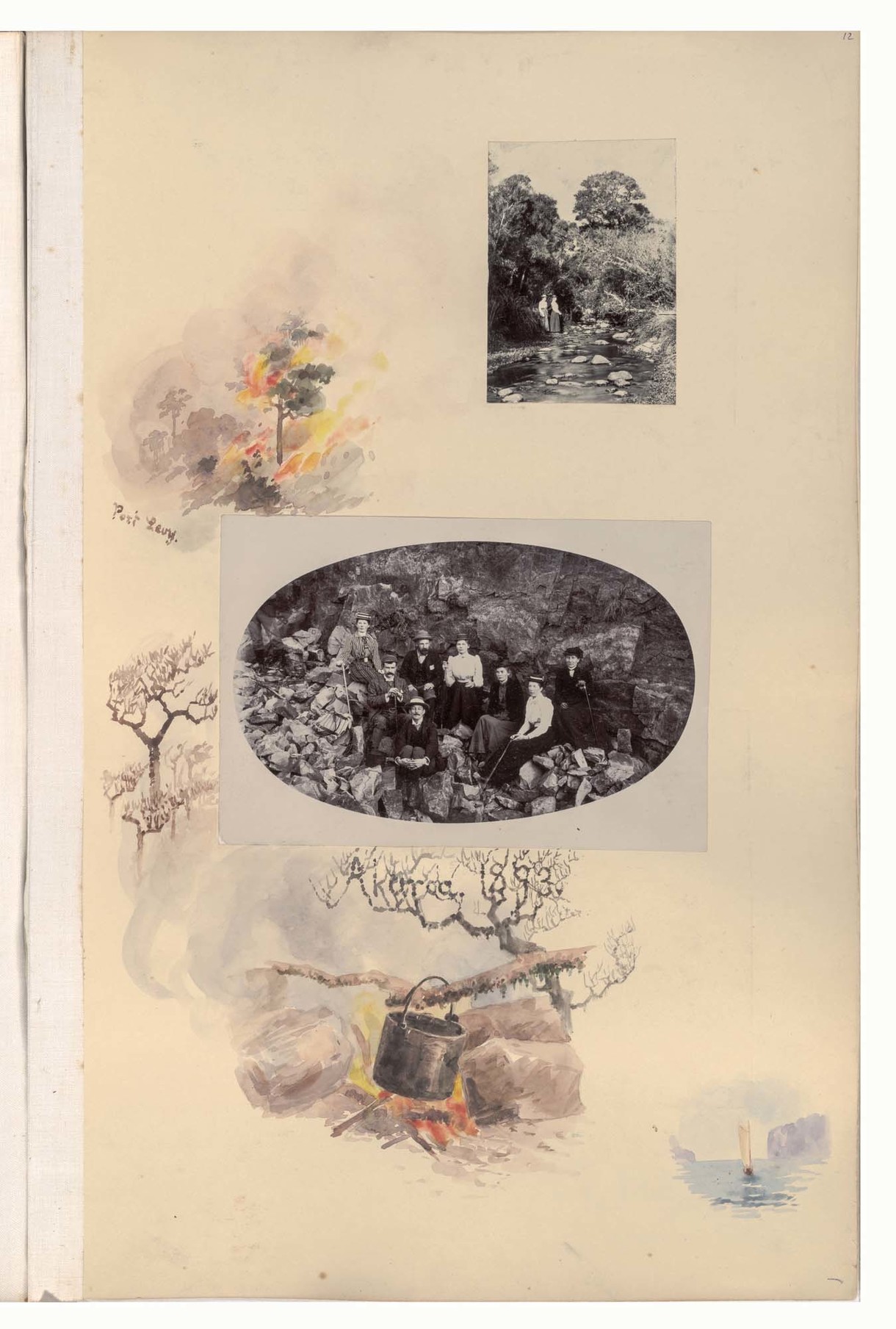Doris Lusk
Aotearoa New Zealand, b.1916, d.1990
Okains Bay, Banks Peninsula
- 1949
- Oil on canvas board
- Bequest of John Cleaver, 2013
- 943 x 940mm
- 2013/081
- View on google maps
Location: South Gallery
Tags: bays (bodies of water), hills, horizon line, landscapes (representations), natural landscapes, seas, trees
“When the Pākehā arrived, much of the peninsula was heavily forested with Podocarp. You can still see old fossilised tōtara stumps lying all around the tops of the hills. As I understand it, Christchurch was built off those forests.” —Tā Tipene O’Regan
In this work, Doris Lusk draws attention to the dead trees commonly seen around Horomaka Banks Peninsula, painting several above the settlement of Kawatea Okains Bay. The surrounding area is shown as ordered and controlled, divided into the individually owned parcels of land that are common for European-style sedentary farming. Both Māori and Pākehā burned forests for settlement – Aotearoa New Zealand’s forest cover had dropped from more than eighty percent to roughly fifty-three percent by 1840, and stands at just thirty-three percent today.
Pākehā ~ New Zealander of European descent
He Kapuka Oneone – A Handful of Soil (from August 2024)
Exhibition History
He Rau Maharataka Whenua: A Memory of Land, 17 September 2016 – 18 February 2018
'Now, the original name of Okains Bay is Kā Awatea. It’s an old settlement area, the old kāika [village] on the peninsula – and of course a place of mahika kai [food gathering], a zone receiving or exploiting the treasure left around the peninsula by Marokura who endowed the place with all things growing in the sea: fish, seaweeds, shellfish and so on.
'The region was all part of the work of Tu-Te-Raki-Whanoa, the atua [demi-god] who shaped the land, the engineer, the repairer of the wrecked waka [canoe] that came to be known as Te Waipounamu [the South Island]. When Tu-Te-Raki-Whanoa finished on the east coast, he went west to the Paparoa. There he created his first valley, Ka Māwheranui o Ka Kuha o Tu Te Rakiwhanoa, which means the river that runs to its sea, at Greymouth. His last big challenge was to become Fiordland. There he was assisted by Hine-Nui-Te-Pō – this was before she became the Mother who gathers in the dead. Tu-Te-Raki-Whanoa was the re-shaper, the salvager; Hine-Nui-Te-Pō was like an adorner, she worked with him as an assistant.
'When the Pākehā arrived, much of the peninsula was heavily forested with Podocarp. You can still see old fossilised tōtara stumps lying all around the tops of the hills. As I understand it, Christchurch was built off those forests.' —Sir Tipene O’Regan
In the vast emptiness, 8 January - 21 August 2016
When interviewed in 1987, Doris Lusk recalled her attraction to the Banks Peninsula landscape:
'[A]long that top road, the old forests are very, very visible […] those ruinous trees […] in the process of rotting, of becoming derelict logs […] remain as the shell of the trunk which is sort of indestructible […] as if it had been made.'
Lusk’s family and others rented a farmhouse above Duvauchelle during the late 1940s and early 1950s, with the surrounding countryside, including the view down into Okains Bay from the summit road, providing the subject matter for many of her paintings at the time.
